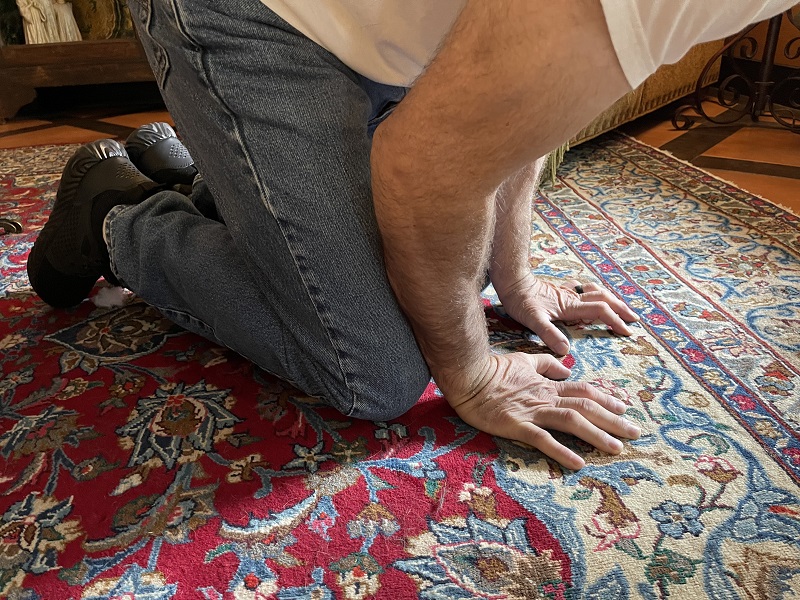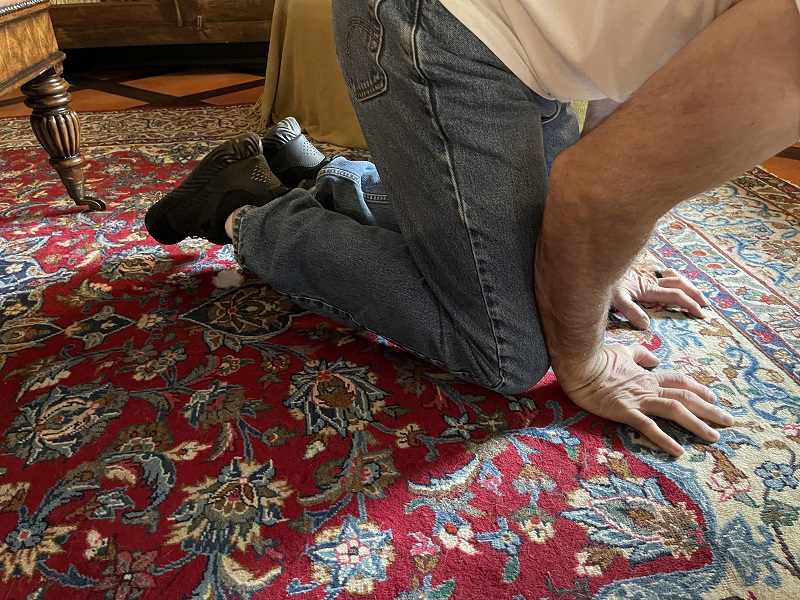Hands, Fingers, and Wrists
Pain in the wrists, hands, and fingers.
Lets talk about common pain experienced from starting on your grappling journey and overtraining.
Whether you train in the Gi or without, or even both, the pain and fatigue will be similar and frequent. The very definition of control in grappling lies in the hands and all the connected tissue to support them. But the price you pay for all that control can be steep. When I think back to how long I suffered with elbow, wrist, finger, and hand pain, I almost want to cry.
As a new grappler, this can be a tough lesson to learn and even tougher on the new older grappler. I spent months trying to figure out how to overcome the pain in my hands from grappling. I often questioned whether I would eventually do permanent damage, from my newfound addiction. One of the few benefits of the COVID shutdown, was my taking time off the mat and spending it learning about how to make my life easier on the mat.
To understand the damage being done to all these areas, we need some examples to compare what is happening. When we clamp our hands onto another person's Gi or their wrist, we are using concentric, and eccentric movements. But clamping at full power and for prolonged periods, can lean heavily on the concentric side. This both strains and develops grip strength and all the related muscles involved in the process. The issue is that we overdevelop our hands and wrists for clamping, so we leave an underdeveloped infrastructure of the counter-movements and their respective muscles and tendons. We need everything to remain in balance, to avoid pain. This can also manifest itself in extreme mobility, due to an imbalance in opposing forces, amplified by the stronger more frequently used muscles, joints, and tendons.
It is critically important to stretch before training and equally as important to stretch afterward, but we must find eccentric exercises to counter this over-development imbalance of concentric exercise. This goes for all aspects of our bodies but is most commonly noticed in our hands, fingers, wrists, and elbows.
If you are new to grappling and your hands are killing you and the thoughts keep passing through your mind, that you may be giving yourself arthritis, you are not alone. Older people with joint pain or mobility issues are a regular sight to a doctor, but going to see your doctor for hand and finger pain as an older grappler, may be fraught with wasted effort and money. On an MRI scan or even some X-rays, inflammation in the hands can look like arthritis, but trust me when I say this. If you learn how to grip when to grip, and how to properly exercise the opposing tissue, it will stop hurting and you'll be better for it.
I often hear people tell me that four to six months after they started training BJJ, they developed what their doctor diagnosed as carpal tunnel, and now surgery is needed. But we who have traveled this road already, know this as "Jiu-Jitsu hands". Unless you are going to give up grappling or get surgery every year, you need to change your tactics to solve this problem. Left unresolved, the pain will work its way up to the elbows and shoulders. It gets much harder to deal with when everything hurts, but you will still have to deal with it.
I have met older grapplers who have quit, just from the hand and elbow pain. If you want to flourish as a grappler for many years to come, learn and apply these simple tips.
1. No death grips. The hands were not made to support your entire body and your opponents as well. If you are gripping just for the sake of gripping, you are abusing your most precious tools.
2. Putting your arms out straight to stop someone’s passing progress is not only a great way to get your arms attacked, but it also places the bulk of their leverage and weight at the very end of your arms. You are in fact, multiplying their force against you, by allowing them to apply leveraged force against the ends of your limbs.
3. Palms facing your chest are safer than palms out. This seems weird I know, but most of the top grapples in the world do this. If you break down body mechanics, you can see that you can tolerate greater force against your arms, when they are turned palms to your chest. Also, if your palms face your chest, it's much harder for you to grab onto someone and further injure yourself.
4. Crossed hands are faster and easier to fight with, as opposed to separated hands. Creating a small crossing of your arms gives you faster movement potential and twice the guard capability when your opponent actively seeks to isolate your limbs. Any good opponent is always working to isolate limbs.
5. Elbows to your sides or on your chest with palms facing in and forearms pushing out, are considerably more efficient, than the overuse of your hands by grabbing, as they are pushing in. I see this mistake all the time. Why hold someone with your hands,
when they are already pushing into you? Still, people do it anyway.
6. Clamping so hard that you are unable to move means, that you are not going to be able to move. Mobility is a key factor in grappling success, so adjust your grips and pressures, to remain mobile. Hugging someone to death is not a submission and costs too much in terms of resources
and manifests that cost later, in terms of pain and suffering.
7. If you need a rest during a round, find ways to take cover that do not require you to hold fast to your opponent. The Turtle technique works well for this and offers a multitude of attacks after you have recovered the energy to carry on.
8. Your grip will get much stronger as you train, so grip training is not necessary. It is often the strengthening of your grip, that is causing the pain. Balance is the key and extra effort off the mat is required to attain that balance.
So what do you do if it is already too late and you have hand and arm pain?
There are some simple things you can do in terms of rehab, but neglecting to change how you use your hands from this point on, will make rehab of little value. Besides the tips above, there are exercises you can do to both relieve and prevent further damage and associated pain. Having the pain already is a great motivator to learn to prevent the pain later.
For grip fighting days, use finger tape. I will post about how to properly apply finger tape soon, but finger tape is a necessary evil for recovery and prevention, especially for those days when you fully intend to take your gripping to the limit.
Analysis of what is mechanically happening as your grip breaks free is a good way to understand how much force is being applied and how easily you can shift from a full grip to just your pinky holding the entire load involuntarily. Most grips do not break all at once.
The point is, if you watch a grip fail in a match in slow motion, you will see that it almost always fails one finger at a time. Consciously letting go before the stresses that cause the grip to fail, can save you considerable pain later.
So what exercises work for this issue?
Believe it or not, the simplest solution is often the best.
Get on all fours and try to place your palms face down to the floor in front of your knees, with your wrists bent, hands flat and forearms pushing against your thighs. Pull everything together very tight and rock forward slightly, until you feel everything begin to stretch. While repeating this stretching for about 20 seconds, continuously try to push your fingertips into the floor. Rock forward slowly until the stretch is slightly painful and you will know you are there. Three to four sets of 20 seconds, before and after training, will work wonders for prevention and recovery.


What you are doing with this exercise, is bringing the opposing tissue up to a matching power and elasticity, to properly compete with your newfound superhuman gripping ability.
Now you know one of the secrets of successful old grapplers for longevity. So get back on the mat and change how you grip, so that this exercise is a preventative and not rehab.
See you on the mat - Pops
This article was written by 59-year-old - BJJ Black Belt Todd Nelson (aka Pops)